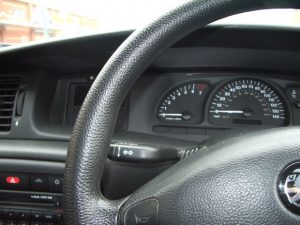The woman behind the wheel of a speeding electric Tesla vehicle that crashed and caught fire in Indiana recently, killing her and her passenger, was far too intoxicated to drive. That’s according to a recently-released police report with toxicology tests indicating the 27-year-old driver had a blood-alcohol concentration of 0.21, nearly three times the legal limit of 0.08. Meanwhile, her 44-year-old passenger and the owner of the vehicle had a blood-alcohol concentration of 0.17.
Although Tesla has come under fire in recent months for its Autopilot feature, a semi-autonomous function that has been cited in a number of crashes, including at least one fatal. The concern has been that the maker of these systems over-hyped the autonomy of these systems. Such a system, if totally autonomous, could go a long way toward curbing drunk driving accidents because human error wouldn’t be a factor. However the reality is that in these semi-autonomous systems, drivers have to be ready to take over the wheel at a moment’s notice. In the case of the driver who died in a car accident while the Autopilot feature was engaged, he reportedly had numerous social media photos of him carrying out other tasks behind the wheel while his vehicle did the heavy lifting. But when a tractor-trailer crossed in front of his path one day, the Autopilot feature failed to detect the white truck against the bright sky, and the resulting collision killed him.
In this case, officials have said there is no indication that the Autopilot feature was activated. Further, officials with Tesla say the feature would have capped the vehicle’s speed on this particular road to under 35-mph on the road where the crash happened.
Tesla officials told reporters at a local newspaper that they are cooperating with police investigators examining the traffic fatality. The car vehicle reportedly sustained so much damage in the DUI accident that the company’s servers didn’t even receive the transmitted data. That data would show if the driver had a vehicle in Autopilot mode. Investigators haven’t yet determined exactly how fast the vehicle was traveling at the time of the collision, but based on the extent of the damage, they believe the car was traveling well over the speed limit.
The accident happened back in November, and authorities are continuing to investigate the events that led to it. The driver suffered fatal injuries from the crash itself, while her passenger died as a result of his injuries in addition to burns when the vehicle burst into flames after hitting a tree.
The Autopilot system in question has the ability to automatically drive a vehicle at a certain pre-determined speed and keep the vehicle within its lane. Drivers need to touch the wheel occasionally to let the system know he or she is still engaged, or else the system will power down.
If it is determined at a later point that the vehicle was in some respect defective, then families of both the driver and the passenger may be able to pursue a product liability claim against Tesla. However, if this is simply a matter of a drunk driver, then it would be only the family of the passenger who could seek damages from the estate of the driver.
If you or someone you love has been injured a Boston drunk driving accident, call for a free and confidential appointment at (617) 777-7777.
Additional Resources:
Police: Driver in double fatal Tesla crash was intoxicated, Feb. 8, 2017, Associated Press
More Blog Entries:
Massachusetts Judge to Weigh DUI Breathalyzer Challenge, Feb. 9, 2017, Boston DUI Attorney Blog
 Boston Drunk Driving Accident Lawyer Blog
Boston Drunk Driving Accident Lawyer Blog

